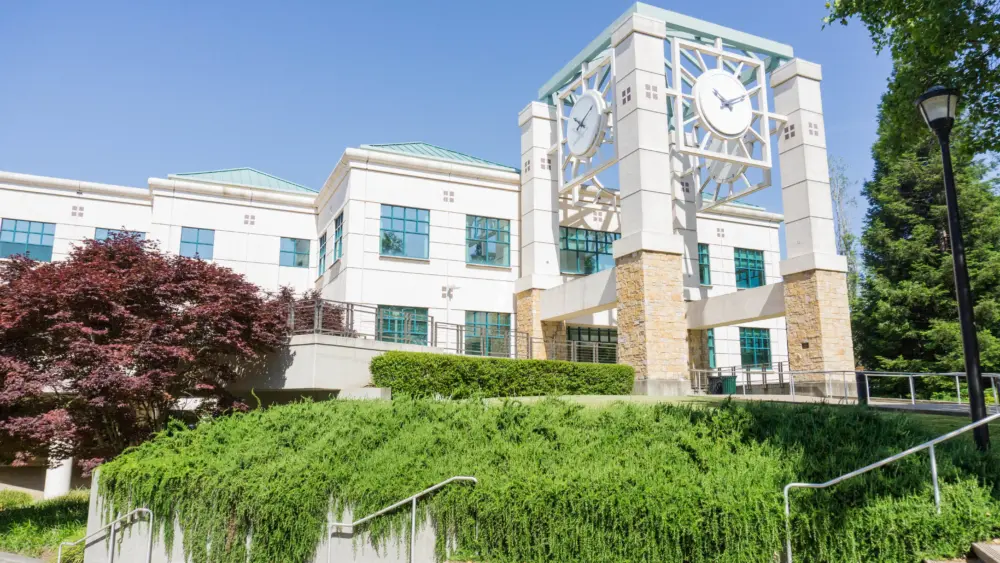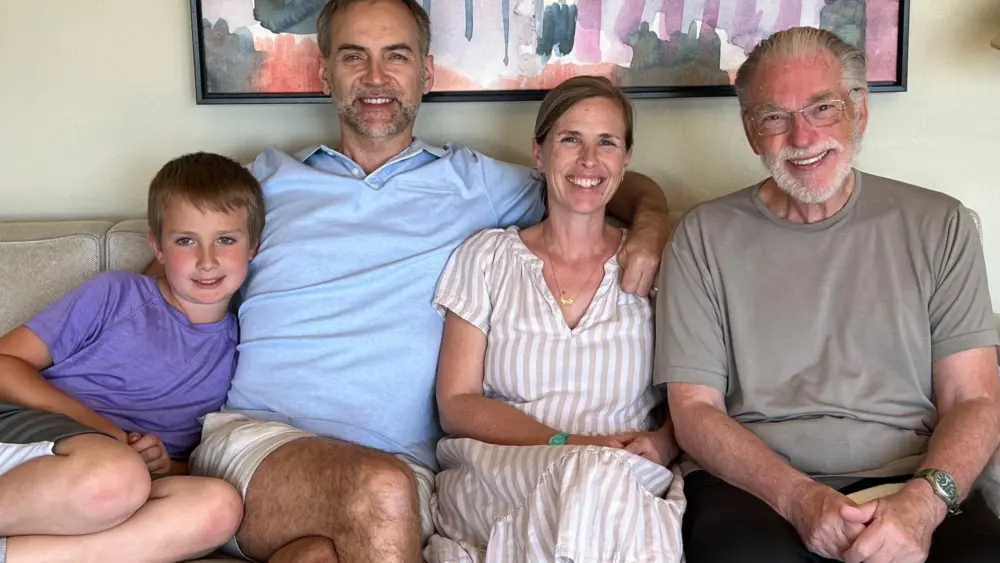NorthBay biz talks to Peter Mondavi and his sons about family legacy, history and their place in Napa Valley wine history.
The quiet man in all of that has been Peter Mondavi, the taciturn tortoise to late brother Robert’s charismatic hare, a meticulous scientist who preferred to toil behind the scenes, gathering his two sons around him to carry on the family business.
Good things come to those who last. Peter Mondavi celebrated his 95th birthday on November 8, 2009. He’s spent the majority of those years in the wine business, and remains president/CEO of Charles Krug Winery and CK Mondavi Family Vineyards, continuing to live on the Charles Krug estate north of St. Helena.
He attributes his good health and happiness to a strong work ethic, a love for winemaking and the glass of Cabernet Sauvignon he enjoys nightly with wife Blanche.
“You have to love the wine business to stay in it,” Mondavi notes. Since the 1940s, he’s been plugging along as the Napa Valley grew like wildfire around him.
“A lot of work has been done and our family’s had a huge impact, but not without the help of many others pushing in a parallel direction,” younger son Peter Jr. says about the Mondavis’ legacy in California wine. “Today, the Napa Valley alone has more than 400 wineries; of those there are only three today—that were started in the ’30s and ’40s; some even survived Prohibition—that are still family-owned.”
Though he semi-retired from running the winery in the late ’90s, the elder Mondavi, sharp as a tack, still shows up to work every day. The family produces 75,000 cases a year under the Charles Krug-Peter Mondavi name, the side of the business run by Peter, Jr. since 1998; older brother Marc’s side of the business, CK Mondavi, recently reached 1 million cases annual production.
Family history
The fourth child of Italian immigrants Cesare and Rosa, Mondavi was born in 1914 in Virginia, Minnesota. The family would soon decamp to Lodi in central California, making a name for themselves in the bulk wine business, shipping grapes for homemade wine during Prohibition, which was legal, and getting into the bulk wine business after that.
It was in Lodi where Peter and brother Robert first spent summers packing 30-pound boxes of Zinfandel grapes, helping their father make a little table wine on the side. Mondavi figures he first started tasting wine at about the age of eight.
By the fall of 1936, brother Robert had come to the Napa Valley to work with a friend of his father’s who ran a small bulk wine operation called Sunny St. Helena Winery, the present-day site of Merryvale Wines.
Robert Mondavi soon heard that the fabled Charles Krug Winery, originally founded in 1861, was for sale. In 1943, he convinced his parents to buy it—they paid $75,000. Cesare appointed Robert and Peter to be co-operators of the business.
“I give credit to my folks,” says Mondavi of those early days. “They had very little education but they knew what to do. They were both very strong and had desire.”
“Most of the wines at that time were made at higher temperatures,” he explains of why cold fermentation became so important, “where they would lose their fruit character through oxidation.”
Mondavi also served in the military during World War II before returning to the family business.
“In those days, you just worked at it,” Mondavi recalls. “[Wine] was a new business, very little was known about it and there were very few wine drinkers. It was a slow learning process. There was very little good equipment. We concentrated on making each variety separate, to best learn about them. We just relied upon the weather and the varietal, whatever it was. It’s become very scientific. We were just learning by error.”
The two brothers operated Krug together for 23 years, introducing not only the use of cold fermentation, but also glass-lined tanks and French oak barrels to their winery, among other innovations.
Those also included the launch of California’s first winery newsletter, Bottles and Bins, in 1949. “It was another way to promote our wines and educate consumers at a time when people knew very little about wine,” Mondavi recalls.
While not one to seek the limelight, the younger Mondavi’s contributions to the advancement of California enology and viticulture have, over time, become more fully appreciated and understood. Mondavi is, in fact, the last surviving member of the 12 “Living Legends in the Napa Valley,” an honor bestowed by the Napa Valley Vintners in 1986.
A family business
Accolades aside, more than anything, Mondavi is determined to keep Charles Krug in the family and to preserve its estate vineyards, investing $21 million over the last several years to substantially replant much of its older vines to better clones, and largely to red Bordeaux varietals, what the Napa Valley does best. The family is also among the largest owners of sustainably farmed vineyards in the Napa Valley, with 11 properties totaling 850 acres from Carneros to the Charles Krug Vineyard surrounding the winery.
In an effort to further shore up his legacy, and that of Charles Krug Winery, which will celebrate its 150th year in 2011, Mondavi and his sons recently restored the Redwood Cellar, a six-story, unreinforced masonry building dating back to 1872. Considered to be the oldest operating winery building in the Napa Valley, it’s a nationally recognized historic landmark built by Krug himself.
“This nearly two-year, $9 million project symbolizes our respect for tradition, our ongoing commitment to protect the land and buildings that are our legacy and our faith in the future of this family, this winery and this remarkable place,” says Peter Jr., who along with his brother dedicated the remodels to their dad, acknowledging, “These are the values our father instilled in us.”
Mondavi’s sons recall spending their childhoods scampering around the winery’s grounds where one of their favorite places to play with their cousins Michael, Marcia and Tim, was the Redwood Cellar.
“Between time taking its toll and the earthquake requirements for structures of this type and age, we had to address it one way or another,” explains Peter Jr. “We wanted to bring it back to its original luster.”
They also renovated the 1881 Carriage House, another historic landmark that Krug had built for his wife, an avid collector of horse drawn carriages. It has since taken on the important role of “party house,” a genteel spot for fundraisers and VIP tastings near the old oaks and rolling lawn, with four double doors that now open to outside views of the Mayacamas and beyond. The renovation incorporates many of the milled redwood planks from the Cellar’s old fermentation tanks, which are now found lining the vaulted walls.
Those redwood planks have outlasted even Robert Mondavi’s ambitions, which famously outgrew the family business when, in 1965, he left to build the iconic Robert Mondavi Winery down the road in Oakville, the first big new winery to be built from the ground up in the Napa Valley since Prohibition.
“It was a contentious point in time,” recalls Peter Jr. “In the midst of [it], my dad asked, ‘Do you kids want to move forward with the winery or do we just sell it and move on?’ I was in high school at the time. We were committed, but that’s when it really came to a tipping point. It was about wanting to continue to pursue the family business for subsequent generations. It’s a great lifestyle, but you have to continue the passion.”
“My uncle [Robert] was the greatest PR man in the world, and my dad was always the one making the wine,” Marc explains about how things began and why they had to change.
“[My dad] had no interest in going out there,” he continues. “He figured he’d keep making good wine and it’d sell itself. Probably in the 1950s and ’60s, when there was very little competition, that worked fine. But with more and more wineries….”
In the end, the metamorphosis wasn’t only about the structural and the physical. It was about reinventing Charles Krug and the Peter Mondavi Family businesses in every way imaginable, a process that forced them to look forward as much as back. To get the family to take a hard look at itself and agree that some things needed changing, from how they approached grape growing (go organic) to rethinking wine quality (make better Cabernet) to physically reinvigorating two historic gems.
Reinventing the brand
Having been a pioneer, in the Mondavi family’s early days of owning Krug, there simply wasn’t a lot of competition around. Among the Napa Valley wineries of any size in the 1940s through the 1960s were Louis Martini, Beringer, Beaulieu Vineyards, Christian Brothers and Inglenook, a list of names owned these days by global corporations or altogether gone.
Alas, for the Mondavis at Charles Krug, such longevity didn’t necessarily have its rewards. While it plodded along intact as a family-run entity, its wines got left behind, consumers increasingly seduced by more and better choices.
By the 1970s, powerhouses like Joseph Phelps, Far Niente and Duckhorn (not to mention Robert Mondavi Winery down the road) were well-established on the scene, followed soon enough by small-production cult Cabernets (Harlan, Grace, Colgin and Screaming Eagle among them) even more intriguing to collectors.
The estate’s vines in need of replanting, Krug had been pulling itself in too many directions making too many wines, its reputation for fine Cabernet Sauvignon all but forgotten.
“At one point for Napa Valley Cabernet, Charles Krug was on the list,” Peter Jr. says. “We clearly fell off that short list and became more commonly associated with California or the North Coast, rarely with Napa.”
It was time to reclaim. The solution was to ramp up quality over quantity, particularly of the Charles Krug labeled wines, most notably Charles Krug Family Reserve, which includes a vintage selection Cabernet Sauvignon and Generations, a proprietary high-end, almost-Bordeaux blend (it contains a touch of Syrah).
With a bold new restoration, better vineyards and winemaking, Charles Krug is poised to grab greatness again, the life’s work of Peter Mondavi and his sons, whose slow and steady determination and ability to change with the times ensures a permanent place for the Mondavi name in Napa Valley, an accomplishment of which the senior Mondavi is extremely proud.
“Mother and Dad did this for us and everything I do is for the future of our families,” Mondavi says. “I feel very proud to know our efforts aren’t in vain.”



